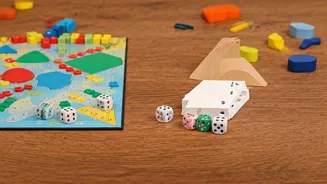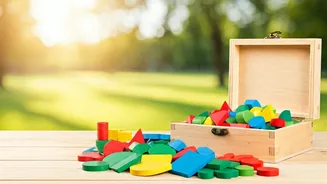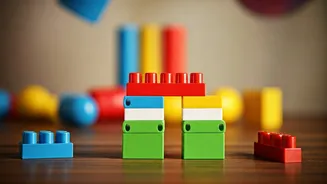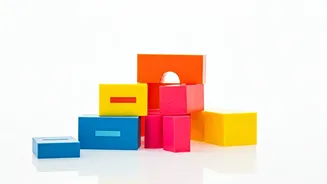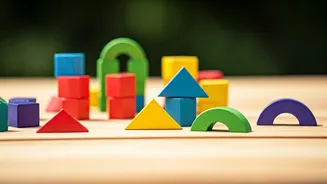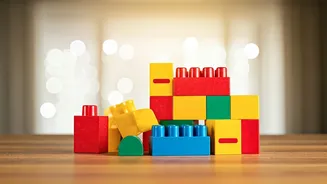Math: Make it Playful
Introduce math concepts using games, puzzles, and entertaining activities. Educational games and puzzles offer an enjoyable way for children to practice
and grasp mathematical concepts. By making learning playful, children are more likely to stay engaged and view math positively. This approach helps reduce the anxiety associated with traditional learning methods, encouraging a fun and immersive learning experience. The integration of games and puzzles can help them grasp the concept and make it a thrilling adventure. This creates a positive association with math. The more fun they have with it, the better they will engage with it. For example, using board games that require counting, adding, or strategic thinking can improve their logical and mathematical skills without them realizing they're actually learning.
Real-World Connections
Connect math to real-life situations. Show children how math is relevant in their everyday lives. When children see the practical applications of math, they can better understand the significance of the subject and develop a stronger interest. For example, use cooking to explain fractions and measurement. Use shopping to explain percentages and discounts. This makes it more relatable and gives them a reason to pay attention. Talking about practical examples can open up their understanding of math. It is important to demonstrate how math is essential in their daily interactions. This helps them connect mathematical principles to their real-world experience. The use of examples makes learning math an accessible and beneficial topic.
Celebrate Mistakes
Encourage children to view mistakes as learning opportunities and embrace a growth mindset. It is important to foster an environment where making mistakes is not viewed as a setback but as a crucial part of the learning process. It is a chance to develop problem-solving skills and enhance their understanding. Help kids understand that making mistakes is a natural part of learning and that the process is more important than achieving the correct answer. Encourage them to see these errors as stepping stones to understanding rather than as failures. Celebrating these mistakes makes it an adventure. Creating a supportive environment encourages children to take risks, try new approaches, and develop resilience. This can boost confidence and foster a positive attitude towards math.
Explore Different Approaches
Encourage children to explore various problem-solving methods. Introduce them to different ways of solving math problems. Every child has a unique way of processing information. Exposing them to multiple methods enables them to discover strategies that best suit their learning style. This exploration cultivates critical thinking skills. It also builds flexibility and adaptability in their mathematical understanding. Forcing a single method upon children can stifle their creativity and problem-solving abilities. Encourage them to explore diverse techniques to find approaches that work best for them. This approach also allows them to solve math problems in ways they find most comfortable and effective.
Growth Mindset
Cultivate a growth mindset: Acknowledge that intelligence and abilities can be developed through effort and learning. This can empower kids by changing their perception of their mathematical abilities. A growth mindset focuses on the belief that intelligence isn't fixed and can be developed through dedication and hard work. Encourage children to see challenges as opportunities for growth and learning. Promote the idea that effort and persistence can lead to mastery. Creating a learning environment that values effort and persistence helps kids feel capable of learning math. Make them believe that the more they practice, the better they will become at it. This will greatly improve their overall perspective on mathematics.
Use Technology Wisely
Utilize apps, digital tools, and technology to enhance learning. Incorporate technology, apps, and digital tools in moderation to make math learning more interactive and engaging. The use of educational apps, interactive websites, and online games can provide additional practice and reinforce concepts. These tools can also offer visual and auditory aids to support learning in different styles. It is important to balance screen time with traditional methods. Select tools that align with learning objectives. This approach can supplement classroom instruction and help kids practice concepts. This provides them with immediate feedback and personalized learning experiences. This makes math more approachable and fun.
Positive & Supportive
Create a supportive and positive learning environment. A positive and encouraging environment greatly influences children's attitudes towards math. Offer constant encouragement, provide constructive feedback, and celebrate their accomplishments. Making math a positive experience will boost their confidence and enthusiasm. Children are more inclined to persist and perform better when they have support from their parents, teachers, and peers. Foster a space where kids feel comfortable asking questions. In this situation, the environment has to be safe. It should encourage them to explore, and take risks, without the fear of judgment. Creating a supportive and nurturing environment can significantly enhance their learning experience.






